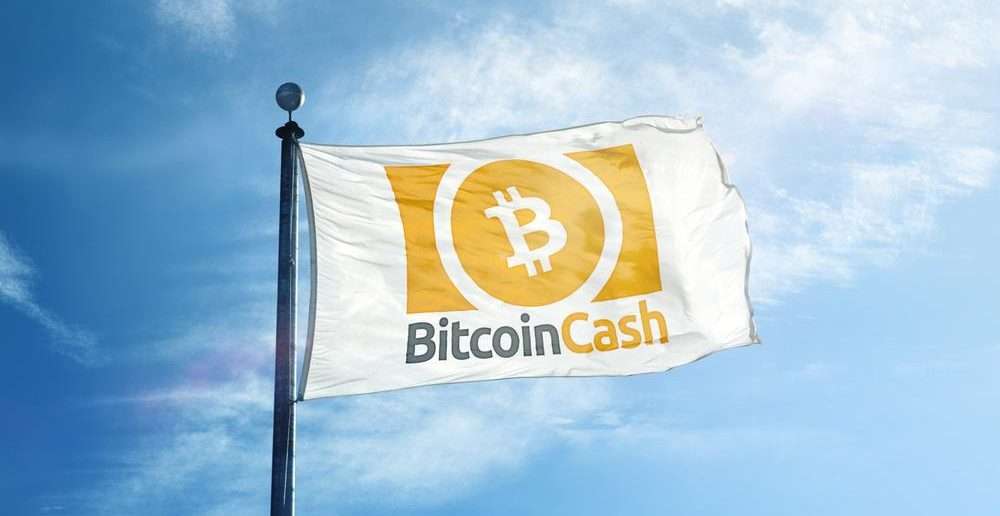The history of Bitcoin Cash
The origin of Bitcoin Cash can be found in the blocksize debate, which some even call the “blocksize war”. Basically, this war is only about one seemingly banal variable, namely the blocksize. The size of a block was unlimited in Bitcoin’s first months. It was only in September 2010 that Satoshi Nakamoto personally changed the code to 1 MB, limiting the number of transactions that can be included in a block. Satoshi thus limited the scalability of Bitcoin. Satoshi never provided a detailed justification for this change. He had introduced the Blicksize limit and only asked everyone else to install the update. Only a few years after Satoshi had disappeared without a trace, however, a debate broke out about precisely this variable, the blocksize.
In June 2015, Gavin Andresen, who became chief developer of Bitcoin after Satoshi’s disappearance, released the famous Bitcoin Improvement Proposal 101 (BIP 101). He suggested to increase the blocksize limit to 8 MB. After that, it should double every two years. In GDP 101, he also explained why the increase in the block size would not result in centralisation by data centres. However, he found no consensus in the Bitcoin developer community. Andresen met with fierce resistance, triggering a prolonged war in the Bitcoin community.
In the following two years there were fierce disputes between the “small blockers” and the “big blockers”. The once unified Bitcoin community became a divided community, shaped by different interests and opinions. Until mid-2017 there were several attempts to increase the block size. All attempts failed.
In May 2017, the problem of missing scalability became more and more acute. More than 100,000 open transactions accumulated in the Mempool. During this time, the New York Agreement between various directors of exchanges, payment service providers and mining pools was concluded in order to finally settle the dispute between “small blockers” and “big blockers” with a compromise. The new consensus was to activate the SegWit and increase the block size to 2 MB (“SegWit2X“). However, this agreement was reached without the core developers, who initially reluctantly accepted the agreement. SegWit should be activated on 01 August 2017.
The birth of Bitcoin Cash
However, things turned out differently than planned. A group was formed which was against SegWit and for a blocksize increase. The “big blockers” joined the movement from which Bitcoin Cash was eventually to emerge.
At the Satoshi’s Vision conference in the Netherlands, Amaury Séchet finally presented BitcoinABC, a version of Bitcoin Core that implemented the vision of the “big blockers”. Instead of the activation of SegWit2X, the first Bitcoin Hard Fork took place on 01 August 2017. Bitcoin Cash (BCH) was born.
The driving forces at this time were in particular Jihan Wu, co-founder of Bitmain and Bitcoin.com owner Roger Ver. Furthermore, the self-proclaimed Satoshi Nakamoto, Craig Wright played an important role through his split arguments. Roger Ver, in particular, still appears today as the mouthpiece of Bitcoin Cash and spreads the (unpopular) opinion that Bitcoin Cash is the true vision of Satoshi Nakamoto and thus the “true Bitcoin”.
However, owners of Bitcoin could be happy. Bitcoin owners who owned BTC at the block height at that time received Bitcoin Cash at a ratio of 1:1. Bitcoin Cash was thus created practically out of nothing and put into the wallets of Bitcoin owners. Everyone with a private key on the Bitcoin blockchain received a mirrored private key on the Bitcoin cash blockchain.
As a result, the total market capitalisation of the crypto currency market rose sharply. Bitcoin Cash started at around USD 500 and reached an all-time high of more than USD 4,000 per BCH in December 2017. Thereafter, the price fell sharply in the context of the bear market of 2018. You can find the current BCH price in our Bitcoin Cash price chart.
Arguments pros and cons of a blocksize increase
The “Small-Blocker” / Bitcoin
The advocates of the 1 MB blocksize have good arguments to show. Thus, Gregory Maxwell, developer at Blockstream, said that Bitcoin will not be safe in the long run if the block size is increased. If all or a large part of all 21 million BTCs are minined, the miners must be paid via the transaction fees. If the blocksize is then too large, the supply of blocksize could exceed demand. As a result, the transaction fees would be too low to pay for the miners. After all, Miner would leave the Bitcoin network and security would be compromised.
Another powerful argument for a small block size is that the Bitcoin network could no longer function in a meaningful decentralized manner. The advocates of the small blocksize therefore argue that the financial prerequisites for the operation of a node must remain as low as possible.
The “Big Blockers” / Bitcoin Cash
Bitcoin Cash proponents argue that the one MB blocksize limit is not enough to implement a currency reform as Satoshi Nakamoto promoted in the Bitcoin white paper. Satoshi described Bitcoin as money for all people. Currently, however, Bitcoin is more of an investment – digital gold – than a means of payment.
Since each block in the Bitcoin Cash blockchain is 8 MB in size (instead of 1 MB for Bitcoin), BCH currently has significant speed advantages over Bitcoin and is also much cheaper, since the larger space in a block tends to mean lower transaction fees.
Subscribe to our daily newsletter!
No spam, no lies, only insights. You can unsubscribe at any time.
Bitcoin Cash proponents also believe that full nodes should be operated by companies (not individuals), such as stock exchanges, specialist mining companies and other stakeholders with a direct financial interest in the network running safely. Everyday users should only use Lightweight Clients to manage their assets
Conclusion
Bitcoin Cash defines itself on its website as follows: “Bitcoin Cash is Peer-to-Peer-Electronic Cash for the Internet. It’s completely decentralized, without a central bank and without a trusted third party.” The emphasis is clearly on the phrase “peer-to-peer electronic cash”. Here, Bitcoin Cash currently still has an advantage in terms of transaction fees and speed. However, it remains to be seen how long this advantage will last, as the Bitcoin Lightning network has already reached the beta test phase (status: October 2018).





